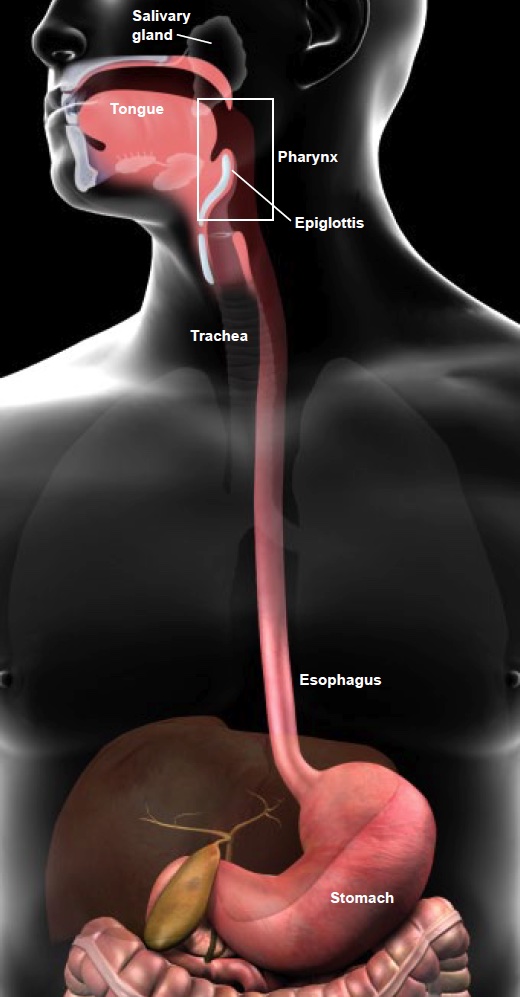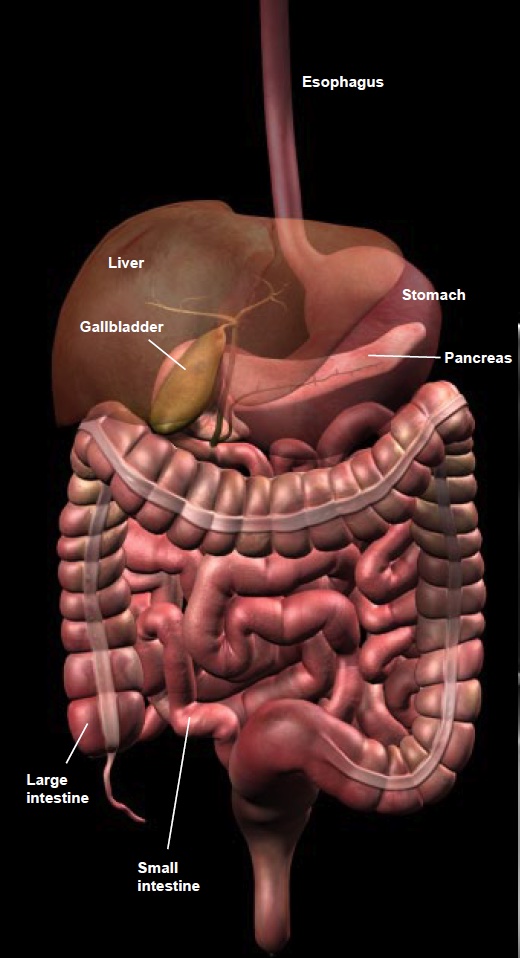How We Process What We Eat
The digestive tract, also known as the gastrointestinal (or GI) tract, is the pathway through which food passes through the body.
The digestive tract begins at the mouth and ends at the rectum. Organs within the digestive tract break down food, extract the nutrients and expel the remaining waste.

The Mouth
The mouth is the cavity that contains the teeth, tongue and salivary glands. This is the entry point of the digestive tract. Inside the mouth, the food is chewed, broken into small pieces and mixed with saliva. The saliva contains enzymes that begin breaking down the food.
Pharynx
The pharynx is the space at the back of the throat. It allows food to pass from the mouth and into the esophagus. It also allows air to pass from the nose and mouth into the trachea and lungs. A flap of skin called the epiglottis folds over the trachea to prevent food from entering the lungs during swallowing.
Esophagus
The esophagus is the long, thin tube that connects the pharynx to the stomach. The muscular walls of the esophagus contract with rhythmic waves. These contractions push food downward through the lower esophageal sphincter and into the stomach.
Stomach
The stomach is the muscular organ that mixes food with acids and digestive enzymes before the food is pushed into the small intestine. The inner walls of the stomach are lined with folds that allow the stomach to expand and contract.
Liver
The liver is the largest solid organ and the largest gland in the body. It plays a key role in digestion and detoxification. It produces and excretes bile, which is used to break down fat. The liver also filters the blood supply. The liver removes toxins, stores vitamins, and minerals, and manages hormones, cholesterol, and sugars.
Gallbladder
The gallbladder is a small organ that stores bile, which is produced in the liver. When bile is needed, it drains from the gallbladder through the bile duct and into the duodenum (the upper portion of the small intestine).
Pancreas
The pancreas is a long, yellowish organ that is positioned behind the stomach. It releases enzymes that aid digestion. It also releases hormones, including insulin, into the bloodstream.
Small Intestine
The small intestine is a long, slender organ located between the stomach and the large intestine. This is where the majority of digestion takes place. The inner walls of the small intestine are covered with tiny wrinkles and folds that aid in the absorption of nutrients.
Large Intestine
The large intestine, commonly called the colon, is the last part of the digestive tract. Its role is to accept waste matter from the small intestine, absorb the remaining water, and then eliminate the waste from the body.



